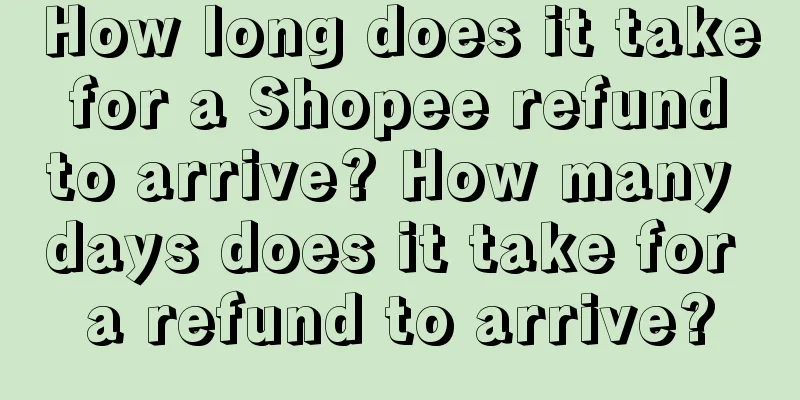What does Amazon's reserved inventory quantity mean? What happens if Amazon keeps reserving but does not put the product on the shelves?

|
As one of the world's largest e-commerce platforms, Amazon's inventory management and operation strategies are crucial for sellers. Among them, the inventory reserve quantity is an important concept, which involves the seller's sales strategy and inventory planning. So what does Amazon's inventory reserve quantity mean? Let's explain it to you below. 1. What does Amazon inventory reserve quantity mean? Amazon inventory reserve quantity refers to the inventory quantity limit set by sellers on the Amazon platform for certain specific products. This limit is to ensure that this part of the inventory will not be purchased by other buyers within a certain period of time, so as to ensure that sellers can sell according to their own sales strategies. Specifically, when a seller expects a product to have a sales peak in a certain period of time in the future, or wants to reserve inventory for certain specific customers, he or she can set the inventory reserve quantity. In this way, even if other buyers want to buy the product, they will not be able to buy it due to the inventory reservation, thus ensuring that the seller can sell according to his or her plan. The setting of inventory reserve quantity not only helps sellers better control the sales rhythm, but also avoids the risk of inventory backlog and unsalable products to a certain extent. It also provides sellers with a flexible sales strategy, which allows them to adjust the inventory reserve quantity at any time according to market demand and competition situation. 2. What happens if Amazon keeps reserving but not putting it on the shelves? 1. Long-term non-sale will lead to reduced account activity. Amazon platform will evaluate the seller's performance based on the seller's sales and account activity. If the seller has no sales records for a long time, the platform may consider the account inactive, and then reduce its weight or take other restrictive measures. 2. Long periods of time without selling products may also affect the store's reputation and rating. Buyers usually pay attention to the store's reputation and rating when purchasing goods. If the store has no sales records for a long time or has few reviews, it may make buyers feel distrustful, thus affecting their purchasing decisions. 3. Reserving inventory for a long time without selling it may also lead to inventory backlog and capital occupation. Inventory staying in the warehouse for a long time not only increases storage costs, but may also cause commodity depreciation or unsalability due to market changes. Funds are occupied in inventory, which also limits the seller's investment and operation in other aspects. Amazon's long-term reservation without selling may have an adverse impact on account activity, store reputation and capital flow. Therefore, when setting the inventory reserve quantity, sellers should fully consider market demand, competition situation and their own operating strategy to ensure that the inventory can be used reasonably and effectively. |
<<: Which site is better to open as the second shopee site?
>>: Update on the selection criteria for Shopee Singapore Site Preferred Sellers and Mall Sellers
Recommend
Who will get the chance if Douyin starts delivering food?
This article introduces the three major groups tha...
Which Shopee site is better? How about the Taiwan site?
The Shopee platform has been developing rapidly in...
How are Amazon star scores calculated? How are they calculated?
The principle of Amazon star rating is to add up t...
"Promise" Guo Youcai gained 10 million followers in 10 days: a grassroots internet celebrity selected by the platform's "algorithm"
This article tells the story of Guo Youcai, a gras...
The 7-episode short drama has been viewed over 100 million times, and the third generation of the rich has made the family business famous
The short drama "Towel Empire" became po...
We discussed these 6 issues regarding the future development trend of Xiaohongshu
This article analyzes and explains the future deve...
Can Amazon withdraw cash every day? What are the rules?
After you open a store on Amazon, if there are ord...
The thinking and formation process of strategy, a must-read for planners
Planning is to achieve a certain goal. It is based...
When is the best time to change jobs?
In the workplace, job hopping is a common thing, b...
Poor-quality children's books, high-priced paper books, boycotting e-commerce, why do booksellers only "hate" JD.com?
The conflict between booksellers and JD.com intens...
The underlying logic of brand potential driving growth
In today's highly competitive business environ...
No matter how big the matter is, it all depends on the circle of friends.
From the excitement of winning the Olympic Games t...
Recyclable jewelry live broadcasts are madly harvesting the elderly: crying while broadcasting, dozens of yuan of bracelets claim to be recycled for millions of yuan, and the anchor has more than 10 billion yuan in change
Recently, there are many people who are obsessed w...
In order to fight against the cover party, netizens began to crowdfund the title and cover
Have you ever had this experience: you were quite ...
Some knowledge that novices need to know about Amazon
When it comes to e-commerce, being a novice is not...









